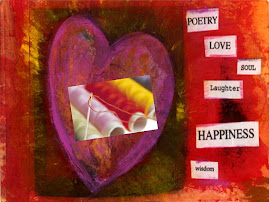
Blowing Up the old Old!
This post is in response to Pop Art Diva’s Saturday Soapbox, “Do You Have a Bucket List?”
I loved the movie, The Bucket List, with Jack Nicholson and Morgan Freeman. Most people have a “bucket list” in their minds—things they want to do before they “kick the bucket.” This delightfully mismatched pair of characters really got into it in a big way, traveling the world to complete their quest, even though they both had terminal illnesses. Their last-ditch "do-before-dying" included items of wild abandon like skydiving and emotional completion—a reunion with an estranged family member.
We hate this reminder, but life itself is terminal. We just don’t know how long we’ve got on this beautiful planet. My awareness of this fact has become more acute now that I am over 60, a number it pains me to type!
As I’ve contemplated my List, I’ve had a strange but wonderful realization. Many of the exotic travels and accomplishments I have hoped for, off and on in my life, pale in comparison to what I already have—and have done. This reminds me of one of my favorite quotes:
Happiness isn’t getting what you want; it’s wanting what you have.
It also reminds me of the key to all manifestation and joy I have learned by living with eyes open to insight. Happiness stems from gratitude. Grateful receivers appreciate life’s gifts and continue in the flow of prosperity and divine surprises. By getting into the habit of being thankful for what you already have every day, it may surprise you how you’ll trim that Bucket List down to manageable size! Let’s face it. This could be helpful. After all, even if we live to be 100-plus, we are still in the second half of life with only limited years to achieve our goals.
It’s usually easier to see how the gratitude principal works in someone else, because we are so close to our own desires, the longings that lead to the Bucket List. Often we’ve been wed to those wants for so many years; we are not objective.
I saw how it works in someone I have been wed to for 11 years, my husband. When medical issues changed his life dramatically, he was lost and angry and understandably depressed. Over time, I have seen him transform into someone who is truly content. He loves our home nestled in nature, our pets, our life—and especially me. (Lucky me!) Stripped of the outer trappings of work and other externals that normally contribute so much to our self-worth, Tim finally has begun to find it from within—the genuine article.
So, here’s my thought. Before you write your Bucket List, write your Gratitude List. It may shorten the exercise and make it a lot easier for you!
Yes, I’d love to travel more, if and when resources allow. My fantasy trip is to visit the countries of Tim’s/my ethnic backgrounds: Poland and Luxembourg for him, Greece (again), Slovakia, and Hungary for me. We’d both love to go to Australia and New Zealand and to spend more time in Hawaii.
I want to publish books, many of them. But if what I have learned in life is helpful to those who most appreciate it, whether on my blogs, website,Twitter, or a conversation over coffee, I have really lived a life with purpose. I have already received feedback many times that I have made a difference to people.
Maybe your Bucket List, too, is shorter than you think and your life is richer—than you knew, however long or short it turns out to be.
~~~
Read these past Cool Saging Conversations:






















